Lohort Castle
Houses within 5km of this house
Displaying 19 houses.
Houses within 5km of Lohort Castle
Displaying 19 houses.
| House name | Description | |
|---|---|---|
| Longueville House | Longueville House was the seat of the Longfield family, built in 1720. Wilson, writing in 1786, refers to it as the seat of John Longfield. In the 1850s it was valued at £56 and held by Richard Longfield from the representatives of Charles P. Coote with a demesne of 312 acres. The Longfields sold Longueville to Senator William O'Callaghan in 1938. The Irish Tourist Association survey of the 1940s claims that the original lands were taken from the O'Callaghans after the 1641 rebellion and granted to Sir Nicholas Purdon. Longueville is now a country house hotel. |

|
| Gortmore House | A late 18th century or early 19th century two storey house, the home of the Foote family in the 19th century. Occupied by Mr Thomas Clarke in 1814, by Edward Foote in 1837 and at the time of Griffith's Valuation. He held the house and demesne from Viscount Lismore. It is labelled Gortmore Castle on the 1st edition Ordnance Survey map but as Gortmore House on the later 25-inch edition of the 1890s. It is still extant. |

|
| Ballygiblin | This was the seat of the Becher baronets in the 19th century. Occupied in 1814 by Beecher Wrixon and in 1837 recorded by Lewis as "recently modernised" [William Morrison]. Sir William W. Beecher held Ballygiblin in fee at the time of Griffith's Valuation when it was valued at £52. The seat of Sir John Wrixon Becher in 1894 and still occupied by the Bechers in 1906. In 1944 the Irish Tourist Association Survey reported that it was owned by D.CMurphy and J. Lombard. The report contains detailed background to the Beecher family including the story of Lady Beecher, the actress, Elizabeth O'Neill. This house is now a ruin. |
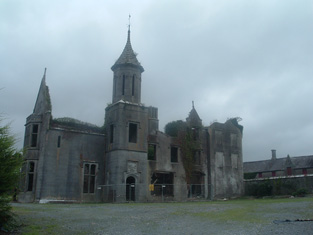
|
| Assolas | Built by the Reverend Francis Gore (died 1748) in the early 18th century and occupied by Philip Oliver circa 1750. This house was the home of the Wrixon family from 1774. Occupied by William Harris in 1814 and by Sir William Wrixon Becher in 1837. Richard Smith was resident in the mid 19th century, holding the property then valued at £25+ from Sir William W. Beecher. Owned and run as a guest house by the Bourke family until 2005. In 2022 it was offered for sale. |

|
| Coolnahane | A house situated on Viscount Lismore's estate and occupied by Jeremiah Leane at the time of Griffith's Valuation when it was valued at £10. It is named Coonahane House on both the 1st and 25-inch edition Ordnance Survey maps. A house is still extant at the site. | |
| Marybrook | This was originally a tower house with additions from the mid 18th century. Occupied by Edward H. Reardon in the first half of the 19th century and by John O'Connell in the mid 19th century, when it was valued at £11 and held from Bartholomew Gibbings. In the sale rental of May 1860 this house was describes as in "thorough repair" and leased to John Connell for 100 years from 1851. In the 1940s the Irish Tourist Association Survey reported that it was then the residence of the Cronin family. It is still extant and in use. |
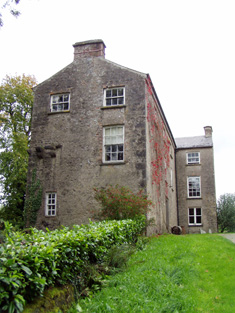
|
| Roskeen | The home of the Power family which was held from the Kingston estate. Pierce Power occupied the house in 1837 and John Power in the early 1850s when the buildings were valued at £24. Arthur Irwin was the occupier of this house in 1906 and it is still lived in. |
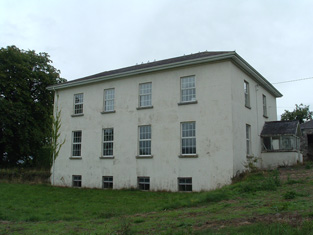
|
| Mountnorth Court | Described by Smith in the mid 18th century as a square building with two wings and fine plantations. In 1786 Wilson refers to it as "the fine and magnificent seat of Lord Lisle, with ample demesnes". This house is described as "in ruins" on the first Ordnance Survey map and modern farm buildings exist at the site now. | |
| Subulter | Leased at the end of the 18th century to James Leahy by the Lloyds. Occupied by John Leahy in 1837 and by Richard Leahy in the early 1850s who held the house valued at £18+ from Thomas Lloyd. Later owned by the Warrens of Codrum House. A new house now stands on the site. | |
| Ballythomas | Originally a Crofts home, leased to the Bullen family by the mid 18th century. Occupied by Robert C. Bullen at the time of Griffith's Valuation. He held the house valued at £12+ and 111 acres in fee. The Crofts appear to have resumed possession in the late 19th century. Home of the O'Connors in the 20th century. |
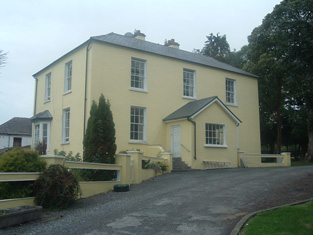
|
| Waterloo | Reputedly built circa 1815 for Henry Longfield, fifth son of John Longfield of Longueville, following his marriage to Mary Powell, heiress of Sea Court, county Cork. At the time of Griffith's Valuation it was held by Henry Longfield in fee and valued at £37. Henry's son John Powell Longfield sold Waterloo to his first cousin Richard Longfield of Longueville who left it to his third son Augustus Henry Longfield. Augustus H. Longfield extended the building. The house was sold to Mr E. W. Hope-Johnstone in 1946. It is still a fine residence. |

|
| Woodpark | This property belonged to the Wrixon family in the 18th century. In 1814 it was occupied by T. Callaghan. In the mid 19th century James Carmichael was in residence. He held it from the representatives of Charles D. Purcell. The buildings were valued at £11.10 shillings. Hajba writes that the Carmichaels later purchased the property from the Purcells. It is still an occupied residence. | |
| Lombardstown House | The seat for many years of the Lombard family, built in the mid 18th century. In 1750 Smith refers to the house as "lately built by James Lombard". From the 1830s it was leased to the Bolster family. George Bolster held the house valued at £15 plus a demesne of 101 acres from Lady Cotter in the early 1850s. The Bolsters remained in residence until the late 19th century when they sold their interest to Henry G. Smith. His descendants continue to occupy the house (Hajba). |

|
| Ballyclogh Castle | At the time of Griffith's Valuation Thomas Haines and Son owned a house, corn and flour mill and offices in the townland of Ballyclogh valued at £82. This property was held with 4 acres from the representatives of C.P. Coote and John Wrixon. In 1906 Ballyclogh was occupied by the representatives of Charles P. Coote. The house was located adjacent to a medieval tower house. Both the house and mill are now in ruins. | |
| Blossomfort | Hajba refers to John Wrixon of Blossomfort in 1703. Wilson, writing in 1786, refers to Blossom-fort as the seat of Mr. Wrixon. The present house, occupied by William Bullen in 1814 and by J. Smith in 1837 was built by the Wrixons probably in the early 19th century. In the mid 19th century Blossomfort was the residence of Thomas Haynes who held the property from Benjamin Wrixon. It was valued at £14. Sold by the Wrixons to the Longfields of Longueville, Blossomfort became the residence of their agent, Richard Smith. This house was reconstructed following a fire in the early 1900s and is still extant. |
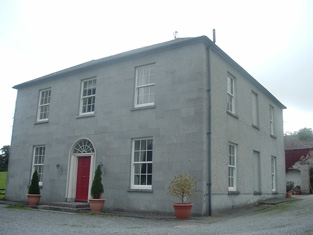
|
| Cecilstown Lodge | A home of members of the Wrixon family in the late 18th and early 19th centuries. Occupied by William Wrixon, father of Sir William Wrixon Becher, in 1837. It was leased to Thomas Heffernan from the 1840s. Valued at £9 in the early 1850s it was later occupied by members of the clergy including the Reverend E.G. Jones, whose widow bought the house in the early 20th century. It was burnt in June 1921 during the War of Independence when it was the residence of the sisters, Esther Jane and Annie Jones. A house, however, still exists at the site. | |
| Kilpatrick | Hajba writes that Roger Langley leased this property from the Longfields in the mid 18th century. Lewis writes that William J. McCormick, medical doctor,occupied the house in 1837. A boys' school was established at Kilpatrick by the McCormicks. At the time of Griffith's Valuation William J. McCormack held the house valued at almost £10.15 shillings from Christopher Langley. Sir William J. MacCormac was a well known London surgeon, the son of Dr Henry MacCormac of Belfast. The house was occupied until the early 20th century but is now a ruin. | |
| Rockfield | A Nash home in the first half of the 19th century, occupied by Christopher Nash at the time of Griffith's Valuation and held from John James Nugent. The buildings were valued at £7. In the 1940s the Irish Tourist Association Survey noted that this property had once belonged to a family called Badham but was afterwards acquired by the Nashs and that "the present house was probably built by the latter family". A house and substantial farm are still extant at Rockfield. | |
| Gortmore Cottage | At the time of Griffith's Valuation, Gortmore Cottage was occupied by Roger O'Callaghan, leasing from Reverend Phillip Townsend, when the house was valued at £11. In the 1940s the Irish Tourist Association Survey noted that the original house had burnt down in 1911 and a two-storey house was then occupying the site. |

